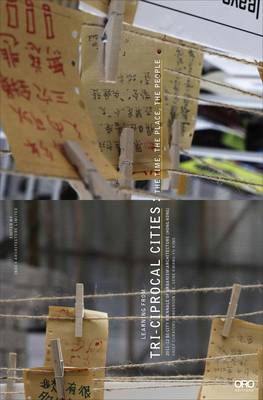
Je cadeautjes zeker op tijd in huis hebben voor de feestdagen? Kom langs in onze winkels en vind het perfecte geschenk!
- Afhalen na 1 uur in een winkel met voorraad
- Gratis thuislevering in België vanaf € 30
- Ruim aanbod met 7 miljoen producten
Je cadeautjes zeker op tijd in huis hebben voor de feestdagen? Kom langs in onze winkels en vind het perfecte geschenk!
- Afhalen na 1 uur in een winkel met voorraad
- Gratis thuislevering in België vanaf € 30
- Ruim aanbod met 7 miljoen producten
Zoeken
Learning from Tri-Ciprocal Cities
The Time, the Place, the Place
Anderson Lee, Gene King, Kee
Hardcover | Engels
€ 25,95
+ 51 punten
Omschrijving
Learning from Tri-ciprocal Cities is more than a document of the 2011?12 Hong Kong & Shenzhen Bi?City Biennale of Urbanism\Architecture; it is a reflection on its themes and concepts which attempts to build an international theory of urban design and arrangement. The book is a platform for display of some of the Biennale's visual and text?based materials, as well as an opportunity for exhibitors, curators, members of the public, and academics to express their responses to the issues brought up by the works. In the content as well as the inspired graphic design of the book, it seeks to provoke new lines of thought that enabled a productive dialogue during the Biennale. The book's graphic layout, which privileges an experimental, multivalent point of view, is intended to support the Biennale's message of open?ended collaboration and discussion. Images, words, and public responses are arranged in a way that the readers need to keep rotating the book and be constantly engaged in the reading process. The book's pages then become a discursive space in which readers can explore an alternate side of the Biennale -even venturing behind the scenes to understand the work of the curators as well as the artists and designers.
Specificaties
Betrokkenen
- Auteur(s):
- Uitgeverij:
Inhoud
- Aantal bladzijden:
- 414
- Taal:
- Engels
Eigenschappen
- Productcode (EAN):
- 9781941806364
- Verschijningsdatum:
- 1/05/2014
- Uitvoering:
- Hardcover
- Formaat:
- Genaaid
- Afmetingen:
- 161 mm x 232 mm
- Gewicht:
- 1106 g

Alleen bij Standaard Boekhandel
+ 51 punten op je klantenkaart van Standaard Boekhandel
Beoordelingen
We publiceren alleen reviews die voldoen aan de voorwaarden voor reviews. Bekijk onze voorwaarden voor reviews.









